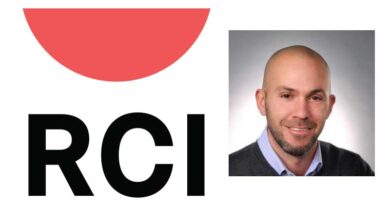Premium Perception Disconnect Part 2: Wrestling with Squirrels
Twenty-five years ago, the marketing vice-president for a successful membership resort entertained an earnestly pitched suggestion from his brand-new marketing manager that premium spending should be increased in order to improve the show rate. Howling with laughter, the executive brushed tears of mirth from his eyes, shook his head in amused disbelief, and served up the opinion that trying to improve efficiency in a premium-incented promotion by throwing money at it was a lot like trying to “wrestle with squirrels.” What he meant by this furry metaphor was that in the traditional carrot-and-cart marketing model, there was so much variance coming from so many tour-impeding variables that pinpoint prognostication just wasn’t possible. “With all those moving parts,” he went on to say, “You don’t know where to spend your money. If you offer ‘em a car, they all show up; if you don’t give ‘em anything, nobody comes.”
The author you now read was that chagrined marketing manager who, recently having been promoted to his position, was wise enough to know not to argue with success—or vice presidents. After all, a lot of people in the business were making money hand-over-fist by doing things pretty much the same way they had been throughout the preceding two decades. It ain’t broke, went the mantra, so don’t try to fix it, whippersnapper.
Given such intellectual entrenchment, it shouldn’t surprise that the multiplicity of “moving parts,” tour impediments all, remains as familiar today as it was a quarter-century ago: the prospect’s work schedule changes, a child runs a fever, the spouse has a negative attitude about the tour, the babysitter cancels, the car won’t start, the weather sucks, third-party naysayers out there nay-saying up a storm—all are beyond the marketer’s control. But the most impactful tour impediment of all, the Goliath of tour impediments—prospect disinterest—was then and is now absolutely within the reach of any marketer who has vision, courage, and a little bit more of The Boss’s money.
In this second of a two-article series, we illustrate “Premium Perception Disconnect,” or PPD, a theory suggesting that the perceptual distinction between premium value, as writ by the marketer…and premium worth, as demonstrated by the prospect, is the key driver underlying a poor show rate; and with a sharp pencil, we formulate a way to turn that disconnect to our advantage in a sort of “premium perception arbitrage,” next.
In the earlier article, a familiar probability equation, p(S-C)(1-p)($0-C) > $0, was adapted to “explain” or rationalize a low show rate by adding the “credibility index,” (ci), calculated as the product of the average show rate, (sr), and the marketer’s estimate of the extent to which prospects have confidence, (p), they will receive the most probable premium, thus: (ci)(S-C) 1-(ci) > $0.
The adapted equation results in the estimated “worth” of the premium to the prospect, an estimation if not perfectly correct in dollars and cents then certainly correct in magnitude: premium worth is harshly scant when juxtaposed against the marketer’s more generous statement of premium value.
PPD acknowledges but otherwise ignores tour impediments because its conceptual premise is that the show rate is the impediment residual: all that remains after tour impediments have had their way with the promotion—is prospect interest. While that nugget admittedly is a tad obvious, beneath it lies a second ugly little truth: If the incented promotion relies for success on consumer self-interest (it does); and if the ultimate goal of a marketing campaign is tour flow, sales, cash, and a healthy receivables portfolio (it is); and if premiums are used that purport great value but provide little worth (some do), we in fact are not marketing to a desirable (i.e. creditworthy) class of prospect but rather an undesirable (i.e. non-creditworthy) class of prospect. Setting aside the generally microscopic segment of tours motivated by a desire to learn what the resort lifestyle has to offer, the incented promotion that dangles those tired old carrots ahead of the cart is moving in reverse: premium spend may be low, but so is production.
Related: Learn how to Grow Receivables Organically In 2021
Drawing on the promotional offer described in the earlier article in which the most probable premium (a Vegas Getaway for Two) was valued by the marketer at $700, the following illustration shows how the marketer, unfortunately, turns The Boss’s gold into lead. Substituting into our original equation, we have:
(.90) x (700 – 70 = 630) + (1 – .90 = .10)(-70) = 630 – 7 = $623 > $0, where p=.90, S=700, C=70.
With a premium value above $620, we should have tours lined up around the block…but with a show rate of just 18%, we obviously do not. When we add the “credibility index” to the original equation, we see why:
(.18 x .90 = .162) x (700 – 70 = 630) + (.838)(-70) = 102.06 – 58.66 = $43.40 > $0, where ci=.162; S =700; C=70.
The premium value of $700 is shown to have a worth to the prospect of just $43.40—so of course, the show rate stinks, but that isn’t the worst of it. Because the marketer’s under-incentivized campaign fails to produce enough risk-neutrals, fewer purchases are made for cash, and the subsequent increase in financed deals is of a class that fails at a rate significantly higher than the norm. As a consequence, lenders in an already precarious economic environment become even less enthused, and they really can’t be blamed: risk propensity research within the membership resort industry has shown a correlation between risk propensity and creditworthiness. More specifically, risk neutrals who participate in membership resort promotions tend as a class to have higher FICO scores than risk-seekers, and if we’re attracting few of the former and loads of the latter…well, Sparky, that’s not good.
So what will it take to bring more risk-neutrals through the turnstile? Following the logic of our model, we have to grow prospect interest by identifying a premium value sufficient to lift the show rate to a stipulated level. Rather than throw money at the show rate, however, as feared by that marketing vice-president a quarter-century ago, we offer an approach that allocates premium spend in such a way that matches it to an end result that is predictable—and predictive.
Let’s say the marketer convinces The Boss to increase premium spend by a few dollars so that a new campaign can be tested with a reasonably defensible premium value of $1400. Assuming a somewhat linear relationship between show rate and premium value, 1400/700 = 2.0; 2.0 x .18 = .36. With an estimate of .90 prospect confidence that the premium received will be the one valued at $1400, the show rate becomes (.90) (.36) = .324, or about 32%.
More importantly, credit-worthy risk-neutrals begin to return, cash flow increases, the receivables portfolio becomes healthier—and the sub-prime tours that show up in busloads all atwitter for the hot new premium offer, rather than being shoe-horned into purchases many cannot afford, may now be channeled into lower-end or entry-level programs more suited to their means.
Calm returns, the sun shines bright, and life again is good. Maybe wrestling with squirrels isn’t so hard after all…
D & A Solutions, Ltd. is a boutique consumer research firm specializing in statistical analysis of Voice of the Customer surveys and enter-to-win Permission Marketing Lead Generation for the timeshare and membership resort industry. You may reach the author, Ken Will, Director of Consumer Research for D & A Solutions, Ltd. At (330) 526-6954, or email him at kwill138@neo.rr.com. The D & A blog:
http://dandasolutionsltd.blogspot.com/
Originally printed in May/June 2010 Resort Trades Management and Operations Magazine



